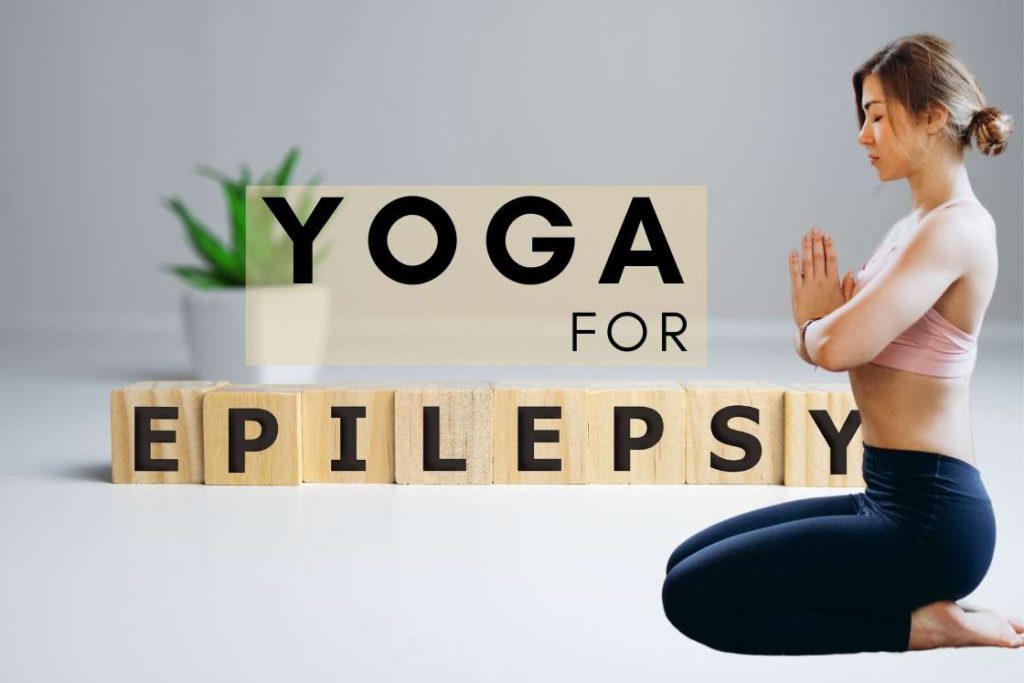
Epilepsy is a neurological disorder, and for any nervous system disorder, yoga offers significant benefits. Nearly every yoga pose has a positive impact on your nervous system in one way or another.
According to the World Health Organization (WHO), approximately 50 million people worldwide have epilepsy. It is estimated that 70 percent of individuals with epilepsy can achieve a seizure-free life with appropriate management, and yoga can play a part in this management.
Yoga contributes to three essential developments in your nervous system, ultimately leading to a seizure-free life. Firstly, through its diverse range of poses, yoga enhances the transmission of electrical signals across your nervous network. Secondly, it improves your overall nerve endurance. Thirdly, it promotes a state of calmness and reduces stress in your nerves.
Can Yoga Trigger an Epilepsy Seizure?
Yoga, when practiced correctly and mindfully, generally does not trigger seizures. However, it’s essential to note that improper or excessive physical stress during yoga can potentially lead to seizures, especially in individuals with epilepsy. Studies suggest that many people with epilepsy find that yoga has the potential to reduce medication side effects and the frequency of seizures.
Yoga poses are designed to promote the optimal alignment and balance of the body, and they do not inherently exert unnatural tension on any biological component. The concern regarding epilepsy seizures arises from practicing yoga poses incorrectly or in a physically intense manner that can stress the nerves in undesirable ways, potentially triggering a seizure.
If you intend to incorporate yoga into your epilepsy management, which can offer significant benefits, it is crucial to do so under the guidance of an experienced and certified instructor. A qualified mentor can provide proper guidance to ensure safe and effective yoga practice, tailored to your individual needs and limitations
Why Epilepsy Seizures Occur?

The fundamental mechanism behind seizures involves a sudden, unexplained burst of electrical transmission between brain cells. The exact cause of this triggering event is often unknown, except in cases where a specific injury or trauma can be identified through diagnostic tools like MRI.
However, certain factors such as stress, lack of sleep, infections, and nutritional deficiencies are frequently considered as potential triggers for epilepsy seizures.
- Unpredictable Neural Bursts: Epilepsy seizures involve sudden and unexplained bursts of electrical activity in the brain. These bursts disrupt normal brain function and can lead to various seizure types.
- Idiopathic Origins: In many cases, the exact cause of epilepsy seizures remains unknown, referred to as idiopathic epilepsy. It is a challenging condition to diagnose and manage.
- Trauma and Injury: Brain injuries, head trauma, or accidents can trigger epilepsy in some individuals. Diagnosing such cases may involve the use of diagnostic tools like MRI to identify structural abnormalities.
- Stress and Anxiety: Emotional stress and anxiety can increase the likelihood of seizures in people with epilepsy. Managing stress is a key aspect of epilepsy care.
- Sleep Deprivation: Lack of sleep can be a potent trigger for seizures. Maintaining a healthy sleep pattern is essential for individuals with epilepsy.
Yoga’s Role in Managing Seizure Triggers
Yoga’s strategy for controlling epilepsy seizures revolves around five key points. It works to eliminate stress triggers, enhance mind-body awareness, promote restful sleep, address infections, and manage the supply of essential nutrients. By addressing these factors, yoga aims to create a more supportive environment for individuals living with epilepsy.
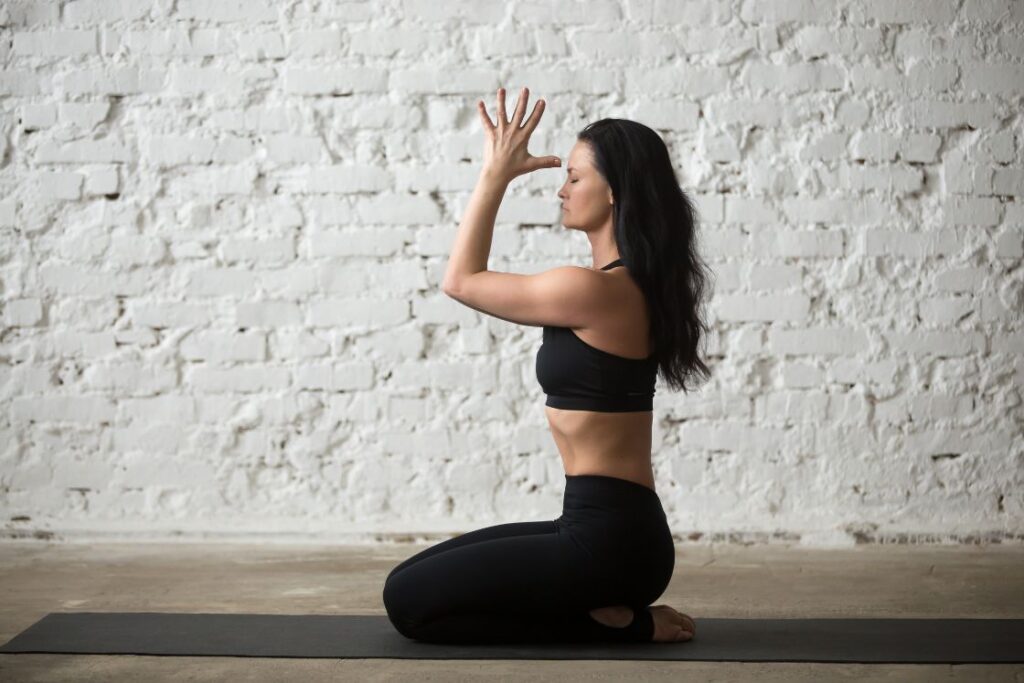
1. Yoga is Effective in Eliminating Stress Triggers
Stress management is a crucial aspect of epilepsy care. Research has demonstrated the significance of yoga, particularly a form of meditation known as Sahaja yoga, in stress management for individuals with epilepsy. In one study, Sahaja yoga resulted in a remarkable 62% reduction in seizure frequency after 3 months of practice, and this reduction further improved to 86% after 6 months of intervention.
The gentle and relaxing yoga poses can alleviate concerns related to epilepsy. These accessible yoga postures have the ability to induce a state of relaxation in the entire nervous system, which is particularly beneficial for individuals with epilepsy. A relaxed state not only reduces stress but also supports the healing of damaged nerve tissues resulting from previous injuries
2. Yoga Increases Mind-Body Awareness
Yoga indeed enhances mind-body awareness, and this heightened awareness can play a role in managing epilepsy triggers. Studies have indicated that meditative yoga practices can naturally help individuals with epilepsy, even those who are less responsive to medication. However, the precise mechanisms of how this works have not been fully established and remain a subject of exploration for neuroscientists.
Nonetheless, it has been observed that in states of heightened awareness, concentration, and consciousness, there is increased neuronal firing at a stable rate. Therefore, when you engage in yoga practice to increase your mind-body awareness, your nerves essentially undergo a form of high-speed neuronal firing but at a stable and controlled rate. This practice may potentially contribute to reducing the frequency of sudden and abnormal bursts of neuronal firing, as seen in epilepsy seizures
3. Yoga Promotes Sound Sleep
Lack of sleep is a stressful matter on your entire nervous system which can quickly become a trigger for an epilepsy seizure. Hypothalamus, thalamus, and pineal gland, play the foremost role in the sleep process. Bedtime yoga poses can stimulate these components for a sound sleep. Additionally, factors like stress and anxiety hinder the sleep process. Yoga helps remove such obstacles as well.
4. Yoga Eliminates Infection Trigger
Viral infections and other flu-like infections have a tendency to attack our nervous system, so can trigger epilepsy seizures. The pathogen is an abnormal entity to our neurons, and consequently, triggers a malfunction. Yoga can enhance our immunity responses to deal better with such foreign threats.
5. Yoga Supports the Nutrients Management
You must be aware of the saying, your brain never sleeps. This also means it needs more food to stay awake all the time. Nutrient deficiency to your brain can make it harder for the nerves to perform their tasks.
Yoga will help your digestive system efficiently sort out the required nutrients. And then boost your circulatory system to promptly transport them to your brain, which ultimately gives better control on epilepsy seizure.
7 Best Yoga Exercises for Controlling Epilepsy Seizures
If you are considering yoga as a means to manage your epilepsy, it is advisable to begin with straightforward yoga exercises. Yoga encompasses practices such as pranayama, hand mudras, and meditation, which are gentle exercises designed to alleviate stress responses, ultimately leading to a reduction in the frequency of epilepsy seizures.
As a beginner, especially if you have epilepsy, it is recommended to commence your yoga journey with uncomplicated poses that pose no significant risk, even if you make beginner’s mistakes.
Try these yoga poses to control the epilepsy.
1. Child’s Pose (Balasana)
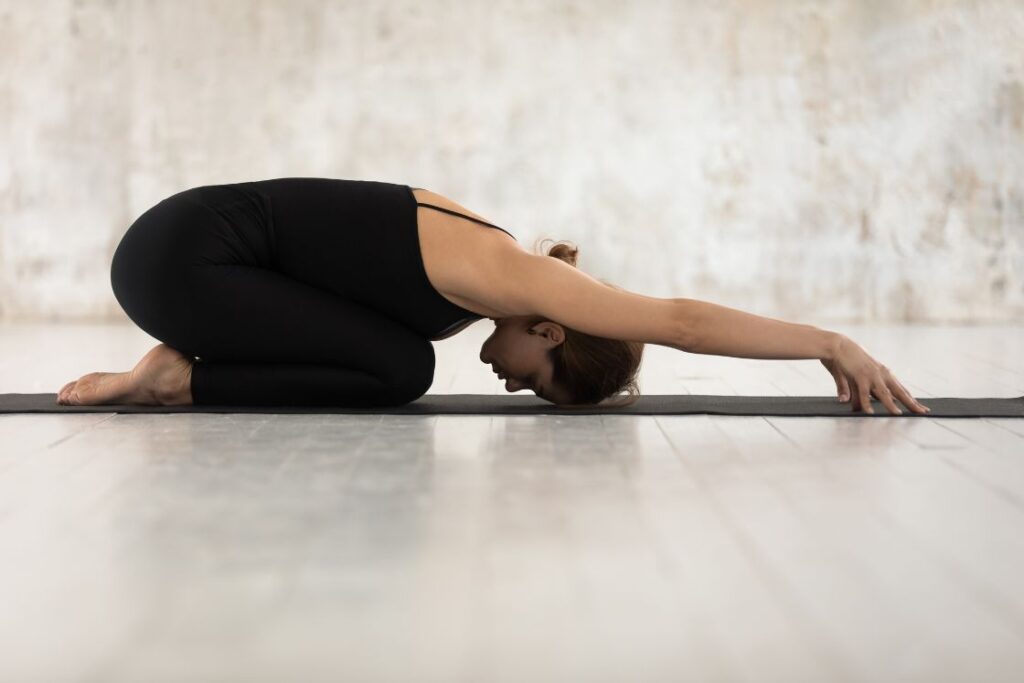
Child’s pose is both a resting and a restorative pose. As you bend forward, it gently arches your spine forward, stimulating your nervous system. And as you rest your forehead against the floor, the soft pressure on your forehead will feel very soothing. You will feel the stiffness dissipating from your head, face, neck, and spine.
- Get down on all fours, your hands and knees.
- Keep your hands shoulder length apart, and knees hip length apart.
- Keep your hands fixed to the floor, and pull your body backwards and sit on your heels.
- Let your stomach be pressed on your thighs, your chest on your knees.
- Stretch out your upper back, shoulders and hands.
- Rest your forehead on the ground.
- Hold the pose for about 30 seconds.
Normally the pose is simple, yet if you have any difficulty, use a yoga block to rest your forehead, or sit with a rolled blanket between your feet.
2. Corpse Pose (Shavasana)
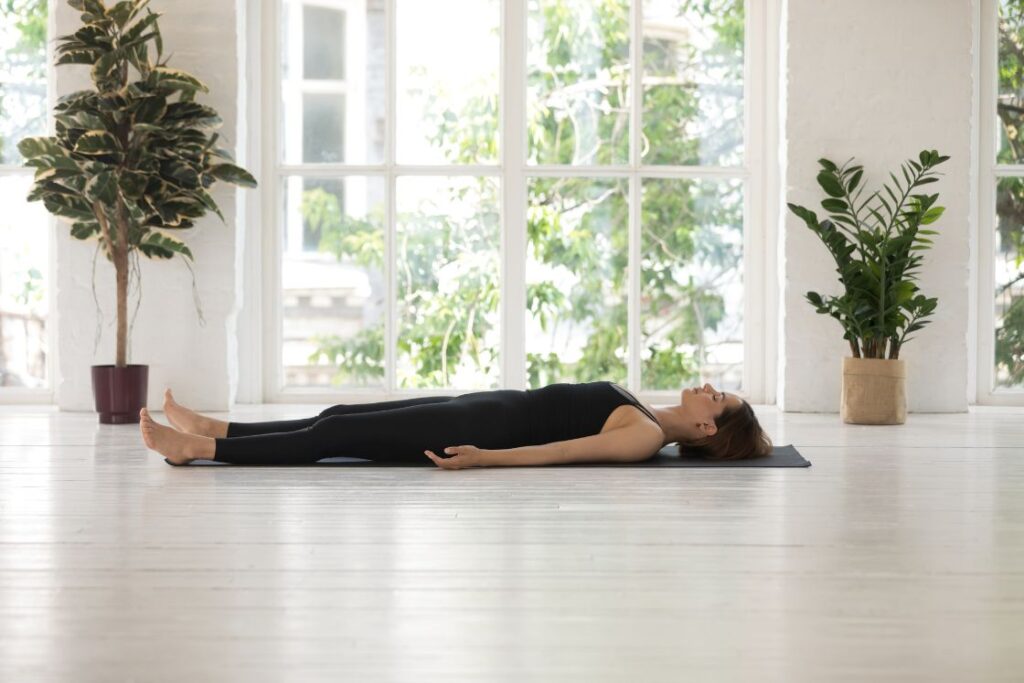
Corpse pose (Shavasana) is extremely popular for its resting nature. And without a doubt, you will feel very relaxed, but the beauty of this pose is rather in its element of awareness. This pose is nothing but lying down meditation, where you focus and concentrate. You concentrate on your physiology and get aware of your physical being. And as you do so your nerves learn to develop stable neuronal firing. Needless to say, this is possibly the safest exercise on earth for someone with epilepsy.
- Lie supine on the floor.
- Stretch out your arms, and rest your legs at hip length apart.
- Close your eyes.
- And breathe steadily.
- And with every breath focus on a specific muscle of your body.
- With every exhale focus on relaxing the muscles.
- Continue this pose for 10-15 minutes if you wish.
The challenge of this pose is to manage your mental block. Consciously condition your mind to enter a state of relaxation and awareness.
3. Tree Pose (Vrikshasana)
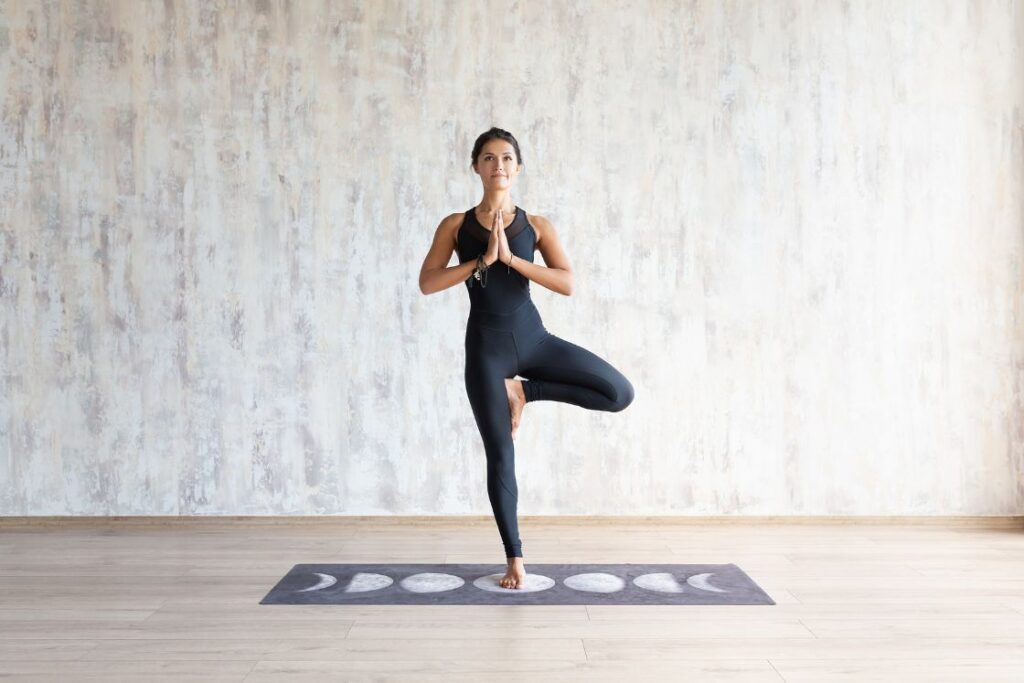
Tree pose will require a little bit of balancing, but apart from that it’s mostly restorative. The balancing part will help your nerves learn better control over your muscles. This pose will also increase your body awareness. The tree pose includes holding and balancing your spine in a perfectly erect posture. As you hold the pose and breathe steadily, multiple healthy activities will be encouraged in your CNS. This pose will also encourage the healing of internal injuries.
- Stand in a mountain pose.
- Spine erect, look forward, shoulders dropped, legs hip length apart, and hands straight along the sides of your body.
- Now gradually shift your bodyweight to your right side.
- Balancing your weight on your right leg, lift up your left leg, and rest your left foot against the inner side of your right leg.
- Raise both your hands overhead, partially straight, and join your palms together.
- Keep your spine erect, exactly the way you would in mountain pose.
- Hold your pose for 30 seconds.
- Repeat the pose by balancing on your left leg.
Although unlikely, you still need to stay prepared for an episode of seizure. If you do get a seizure, mid-pose, you will fall and injure yourself. Thus it is safe not to practice this step when you are alone, not even with support.
4. Crocodile Pose (Makarasana)

Crocodile pose will add more depth to your spinal activity, in your yoga routine. Although, just enough to stimulate it, the effort will still be significantly less as compared to poses like the cobra pose. Crocodile pose is a good way to rest as you stretch your spine. This pose is also very beneficial to your cardiovascular health, and thus, your circulatory system.
- Lie on the front of your body.
- Keep your legs slightly wider than hip length.
- Bend your elbows and place your hands by the sides of your body.
- Now press down with your arms, and arch up your upper body from your torso.
- Bring your hands in front of you, plant your elbows on the ground, with wrists facing upward.
- Open your palm and create a resting hold for your head.
- Rest your chin on your palm and rest.
- Hold the pose for a minute to a couple of minutes.
- During your hold bend one knee at a time and draw your heel toward your sitting bone.
After drawing one heel at a time, you can also try drawing both your heels together, toward your sitting bones.
5. Frog Pose (Mandukasana)
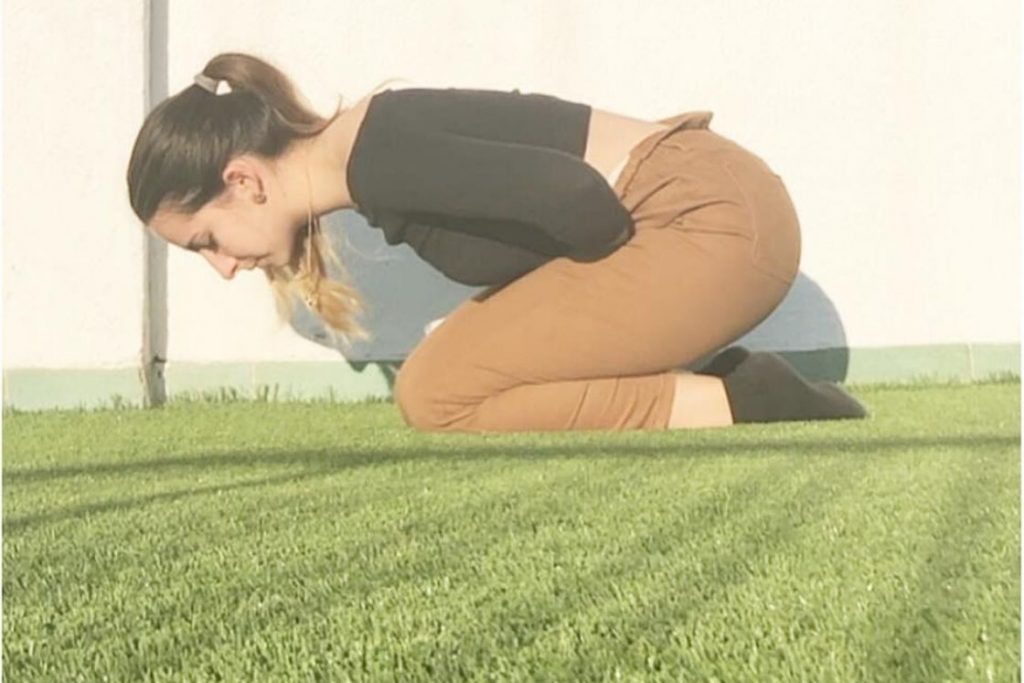
The frog yoga pose is something that will help primarily with your digestion. It will also boost your nervous functions and blood circulation. The frog pose will help you provide an efficient supply of nutrients, without which your brain can trigger a seizure.
- Sit in Vajrasana, with folded knees and on your heels.
- Take a deep breath in, and then equally deep exhale.
- Exhale using your stomach, your belly should press completely into your spine as you exhale.
- Press hold your belly into your spine, with your palms (one over the other.)
- Keep your belly pressed in, bend forward all the way down, resting your chest on your knees.
- Look in front and take 5-7 breaths and release.
- Repeat the step 3 times.
You will have to be a little careful of your abdomen. In this pose, you will realize the safe press for your stomach. You don’t want to overdo the press and injure your insides.
6. Bhramari Pranayama (Bee Breathing Exercise)
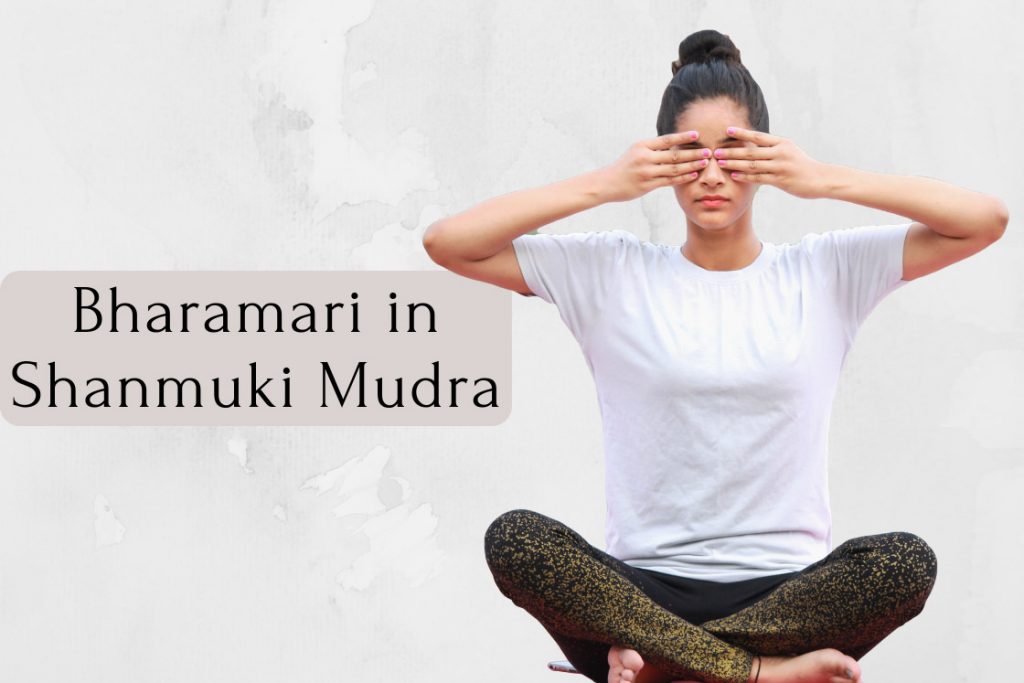
It is believed that while the yoga poses help you improve the physical activities of your organs and tissues, the Yoga Pranayama helps you improve the physiology itself. The Bhramari Pranayama is all about your sense organs and the nervous network related to them. Naturally, the Pranayama will improve the physiology of the sense organs and sensory nerves, both of which play a vital role in triggering your epilepsy.
- Sit in an easy pose.
- Close all your senses inward, with the shanmukhi mudra.
- In shanmukhi mudra, you open up your palm in both hands and place your little fingers under your lower lip. Your ring finger over your upper lip, your middle finger over your nose bridge, your index finger on your closed eyes, and thumbs in your ear hole.
- Take a deep breath in and exhale making a humming bee-like vibration sound.
- Repeat this 10 times.
Make sure you are not pressing hard with your fingers. Apply very gentle pressure. The vibration sound should be made in the back and roof of your mouth. The vibration should be contained inward, rather than forced out, and it needs to be felt by all the sensory points on your face and head.
7. Mrigi Mudra or Vishnu Mudra

One of the easiest and most effective exercises for epilepsy, mrigi mudra is a simple hand gesture of yoga. Mrigi mudra in epilepsy cures nervous weakness and reduces tension. Do this mudra a minimum of 30 minutes a day to control the epilepsy seizure.
- Sit in any meditative posture, padmasana, sukhasana or vajrasana.
- Rest your hands on your thighs, palms facing up, in a relaxed position.
- Focus on your right hand:
- Fold your index and middle fingers toward your palm, touching the base of the thumb.
- Keep your ring and little fingers as they are or slightly stretched.
- Ensure your thumb is stretched sideways, ideally at a right angle from the ring and little finger.
- Hold this hand position for 15 minutes in one stretch.
- Do this mudra 2 to 3 times a day to cure epilepsy.
Precautions to Consider When Practicing Yoga for Epilepsy
- Consult Your Healthcare Provider: Always consult with your healthcare provider before beginning a yoga practice, especially if you have epilepsy. Your healthcare provider can provide personalized guidance and ensure that yoga is safe and suitable for your specific condition.
- Stay Hydrated: Dehydration can be a seizure trigger for some individuals. Ensure that you are well-hydrated before and after your yoga practice.
- Modify Poses as Needed: Work with your instructor to modify poses that may pose a risk based on your specific condition and seizure triggers. Avoid postures that involve abrupt or extreme movements, inversions, or deep backbends.
- Mindful Self-Awareness: Develop mindfulness and self-awareness of your body. Pay attention to any warning signs or auras that may precede a seizure. If you sense an aura or prodrome during your practice, stop and move to a safe space.
- Avoid Strenuous Poses: Choose yoga poses that are gentle and low-impact. Avoid intense backbends, inversions, and poses that require a high level of physical exertion or balance, as they may increase the risk of triggering a seizure.
Conclusion
Avoiding the triggers of epilepsy is no easy task. You need to carefully manage all parts of your lifestyle. Which will include your yoga and other exercises, your diet, habits, and medications. You also need to pay special attention to not skip your medications.
Yoga has both systematic breathing and meditation in its practices. Yet, you can try and include regular meditation and breathing exercises to your routine. This will help you multiply the benefits of yoga. And last but not the least, always remember not to over-exhaust.
FAQs Yoga for Epilepsy
Yoga can be safe for individuals with epilepsy when practiced mindfully and under the guidance of an experienced instructor who is knowledgeable about the condition.
Certain yoga poses involving intense inversions or rapid movements should be avoided. It’s crucial to choose gentle and restorative poses, and modifications should be made to ensure safety.
Yes, some yoga poses are considered safe and effective for individuals with epilepsy. These include gentle and restorative poses like Child’s Pose and Corpse Pose. It’s essential to choose poses that do not involve extreme movements or inversions.
Yes, pranayama, which involves controlled breathing techniques, can be beneficial. Bhramari Pranayama (Bee Breathing Exercise) is one such practice that focuses on sensory nerves and sense organs.
Lifestyle changes may include maintaining a regular sleep schedule, staying well-hydrated, managing stress, and avoiding seizure triggers such as excessive alcohol or drug use.
Yes, children with epilepsy can benefit from yoga. However, it’s essential to work with a yoga instructor who has experience teaching children and understands their specific needs.





I noticed that Mrigi mudra is the same as Apana Mudra. Is this correct?
No, in Mrigi mudra the thumb touches the middle portion (intermediate phalanges) of the middle and ring fingers; the tip part (distal phalanges) remains untouched. The shape of this gesture resembles Mrig “deer” face. Meanwhile, in Apana mudra, the tip part of these fingers is touched with the thumb. This is a slight difference between mrigi mudra and Apana mudra.